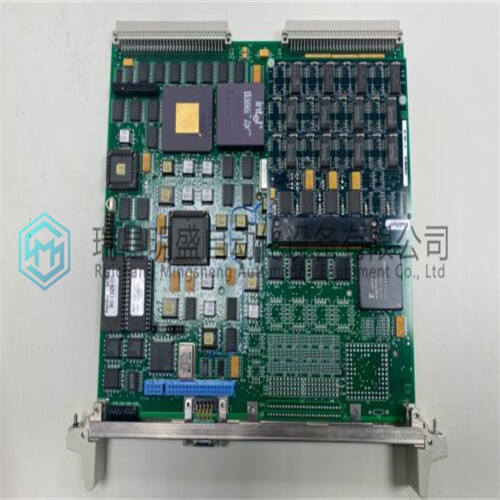RadiSys 68-0061-10自动化控制模块
1.产 品 资 料 介 绍:
中文资料:
基本操作网络中的每个节点(RadiSys 68-0061-10反射内存板)使用菊花链环路中的光纤电缆互连。第一块板的发射器必须连接到第二块板的接收器上。第二板的发射器连接到第三板的接收器,依此类推,直到在第一板的接收器处完成环路。每个节点都必须有一个唯一的节点ID,这是使用一组八(8)个板载交换机来实现的。节点ID的顺序并不重要;它们只需要是唯一的(即没有两个节点可以具有相同的节点ID)。
网络上的数据传输是由VMEbus主机系统对板载SDRAM的写入启动的。写入可以像VMEbus写入一样简单,也可以是由于DMA引擎的循环造成的。当对SDRAM进行写入时,RadiSys 68-0061-10上的电路会自动将数据以及其他相关信息写入发送FIFO。
英文资料:
Basic Operation Each node (RadiSys 68-0061-10 Reflective Memory boards) in the network is interconnected using fiber-optic cables in a daisy chain loop. The transmitter of the first board must be tied to the receiver of the second board. The transmitter of the second board is tied to the receiver of the third, and so on, until the loop is completed back at the receiver of the first board. Each node must have a unique node ID, which is accomplished using a bank of eight (8) on-board switches. The order of the node IDs is unimportant; they just have to be unique (i.e. no two nodes can have the same node ID).
A transfer of data over the network is initiated by a write to on-board SDRAM from the VMEbus host system. The write can be as simple as a VMEbus write, or it can be due to a cycle by the DMA engine. When the write to the SDRAM is occurring, circuitry on the RadiSys 68-0061-10 automatically writes the data, along with other pertinent information, into the transmit FIFO.
2.产 品 展 示

3.主 营 品 牌

本篇文章出自瑞昌明盛自动化设备有限公司官网,转载请附上此链接:http://www.jiangxidcs.com







